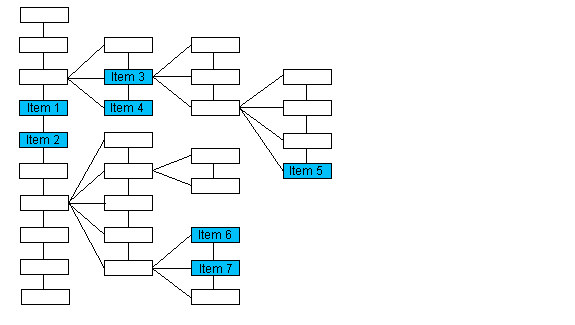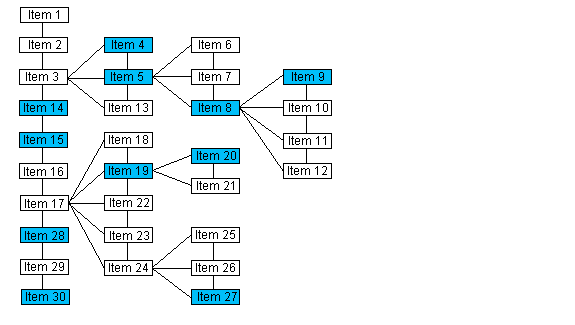- element
- An item in the Data Set. The item in the Data Set that immediately follows this item will be returned.
- tree
- true to evaluate the Data Set as a tree; false to evaluate the Data Set as a list.
- includeVolatile
- true to retrieve the next element, volatile or non-volatile; false to retrieve the next non-volatile element.
| Visual Basic (Declaration) | |
|---|---|
Public Function GetNextElement( _ ByVal element As DicomElement, _ ByVal tree As Boolean, _ ByVal includeVolatile As Boolean _ ) As DicomElement | |
| Visual Basic (Usage) |  Copy Code Copy Code |
|---|---|
| |
| C# | |
|---|---|
public DicomElement GetNextElement( DicomElement element, bool tree, bool includeVolatile ) | |
| C++/CLI | |
|---|---|
public: DicomElement^ GetNextElement( DicomElement^ element, bool tree, bool includeVolatile ) | |
Parameters
- element
- An item in the Data Set. The item in the Data Set that immediately follows this item will be returned.
- tree
- true to evaluate the Data Set as a tree; false to evaluate the Data Set as a list.
- includeVolatile
- true to retrieve the next element, volatile or non-volatile; false to retrieve the next non-volatile element.
Return Value
The item in the Data Set that immediately follows the item specified by element, or a null reference (Nothing in Visual Basic) if there is no item following element (element is the first item in the Data Set).
| If the passed object points to: | The method returns an object pointing to: |
|---|---|
| Item 1 | Item 2 |
| Item 3 | Item 4 |
| Item 5 | null |
| Item 6 | Item 7 |
If the Data Set is evaluated as a list, the next item in the list is returned. Please note that the numbering of the items in the following illustration does indicate the order of the items when the Data Set is evaluated as a list.

| If the passed object points to: | The method returns an object pointing to: |
|---|---|
| Item 14 | Item 15 |
| Item 4 | Item 5 |
| Item 8 | Item 9 |
| Item 19 | Item 20 |
| Item 27 | Item 28 |
| Item 30 | null |
The following methods will also help you navigate the Data Set as either a tree or a list:
GetNextElement
If you evaluate the Data Set as a tree, you can also use the following methods to navigate the tree:
A volatile element is an element that can be changed or destroyed in the process of inserting or setting an image. A non-volatile element is an element that must be changed manually. It is not changed or destroyed by inserting or setting an image.
For example, a grayscale image has elements DicomTag.SmallestImagePixelValue, DicomTag.LargestImagePixelValue, etc. If the image is changed to a color image, these elements disappear and the following elements appear: DicomTag.RedPaletteColorLookupTableDescriptor, etc. These are volatile elements since they are changed or destroyed when an image is changed or set.
To retrieve a next element that must be changed manually, i.e., is not volatile, set volatile to false. To retrieve the first element, either volatile or non-volatile, set volatile to true.
Target Platforms: Microsoft .NET Framework 3.0, Windows XP, Windows Server 2003 family, Windows Server 2008 family

